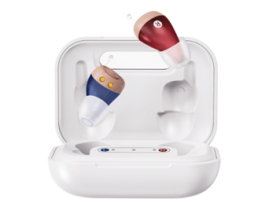Choosing the right type of care for a senior loved one is a significant decision that impacts their quality of life and well-being. In New York, families often find themselves deciding between assisted living and in-home care. Both options have their benefits and challenges, and the best choice depends on the individual needs and preferences of the senior. Here’s a detailed comparison to help you determine what’s best for New York seniors.
Understanding Assisted Living
1. What is Assisted Living?
Assisted living facilities provide a residential option that combines housing, personal care services, and healthcare support. These facilities are designed for seniors who need help with daily activities but do not require the intensive medical care provided by nursing homes.
2. Benefits of Assisted Living
- Comprehensive Care: Assisted living facilities offer 24/7 support, including assistance with bathing, dressing, medication management, and meal preparation.
- Social Interaction: Residents have opportunities to engage in social activities, events, and outings, reducing feelings of isolation.
- Structured Environment: Facilities provide a structured environment with routines and schedules, which can be beneficial for seniors with cognitive impairments like dementia.
- Amenities and Services: Many facilities offer amenities such as fitness centers, beauty salons, and transportation services.
3. Challenges of Assisted Living
- Cost: Assisted living can be expensive, and costs vary widely based on location and services provided. Not all expenses may be covered by insurance or government programs.
- Adjustment: Moving to a new environment can be challenging for seniors, leading to initial stress and discomfort.
- Less Personalization: While care is comprehensive, it may not be as personalized as in-home care due to the facility’s structured nature.
Understanding In-Home Care
1. What is In-Home Care?
In-home care involves professional caregivers providing assistance to seniors in the comfort of their own homes. This care can range from a few hours a week to full-time, live-in care, depending on the senior’s needs.
2. Benefits of In-Home Care
- Familiar Environment: Seniors can remain in their own homes, surrounded by familiar objects and routines, which can be comforting and reduce stress.
- Personalized Care: Caregivers provide one-on-one attention, tailoring their services to meet the specific needs and preferences of the senior.
- Flexibility: In-home care schedules can be adjusted as needs change, providing the right level of support at the right time.
- Family Involvement: Families can be more involved in the daily care and well-being of their loved ones, often leading to better outcomes.
3. Challenges of In-Home Care
- Cost and Coverage: While in-home care can be cost-effective, expenses can add up, especially for 24/7 care. Insurance and Medicare may not cover all costs.
- Caregiver Availability: Finding and retaining reliable, skilled caregivers can be challenging, and there may be gaps in coverage during caregiver transitions.
- Home Modifications: Seniors’ homes may require modifications to ensure safety and accessibility, which can be an additional expense.
Factors to Consider
1. Level of Care Needed
- Health and Medical Needs: Seniors with complex medical conditions or those requiring constant supervision may benefit more from the structured environment of assisted living.
- Daily Living Assistance: For seniors needing help with daily tasks but not continuous medical care, in-home care can be an ideal solution.
2. Lifestyle Preferences
- Independence: If maintaining independence and staying in their own home is a priority for the senior, in-home care is the better option.
- Social Interaction: Seniors who thrive on social engagement and structured activities may find assisted living more fulfilling.
3. Financial Considerations
- Budget: Compare the costs of assisted living facilities and in-home care services in New York. Consider available financial assistance, including Medicaid, long-term care insurance, and veterans’ benefits.
- Value of Services: Evaluate the range of services provided and determine which option offers the best value for the cost.
4. Family Dynamics
- Support System: Consider the availability of family members to provide support and oversee care. In-home care can be a collaborative effort between professional caregivers and family, while assisted living offers more comprehensive professional support.
Conclusion
Deciding between assisted living and in-home care for New York seniors requires careful consideration of the senior’s needs, preferences, and financial situation. Both options offer unique benefits and challenges, and the best choice will depend on individual circumstances. By understanding the differences and evaluating all factors, families can make an informed decision that ensures their loved one receives the best possible care and quality of life.








Leave a Reply